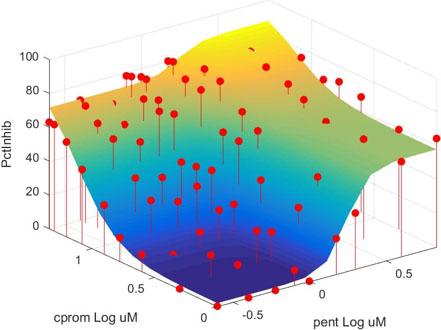High-throughput flow cytometry in drug discovery

High-throughput flow cytometry in drug discovery. Credit: Alexandre Chigaev, University of New Mexico
Led by guest editors Mei Ding, Ph.D. (AstraZeneca) and Bruce S. Edwards, Ph.D. (University of New Mexico), this special issue presents a range of research papers, application notes and technical notes that reflect recent advances in HTFC methods design, provide new expert insight and perspectives, and highlight areas for improvement to broaden the range of HTFC applications in drug discovery.
Examples include descriptions of different software and data analysis workflows; the relative merits of different platforms for assessing biological responses of interest; novel HTFC applications for the development of biologic drugs and novel antibodies; target-agnostic or mechanism-informed phenotypic drug discovery; use of HTFC for single cell analysis; engineering autologous patient T cells to express chimeric antigen receptors (CAR-T) for use in adoptive cellular therapy of malignancies; and more.
Flow cytometry has proven to be a powerful technology, enabling multi-parametric analysis of single cells or particles, and widely used in a broad range of clinical and basic research and applications, including quantification of cell surface and intracellular proteins, DNA analysis, cell proliferation, cell viability, cellular granularity, and cell size. HTFC was made possible by the introduction of novel sample handling and analysis technologies.
###
Explore the August special issue of SLAS Discovery at http://journals.
A PDF of this article is available to credentialed media outlets upon request. Contact nhallock@slas.org.
About our Society and Journals
SLAS (Society for Laboratory Automation and Screening) is an international community of nearly 20,000 professionals and students dedicated to life sciences discovery and technology. The SLAS mission is to bring together researchers in academia, industry and government to advance life sciences discovery and technology via education, knowledge exchange and global community building.
SLAS DISCOVERY: 2016 Impact Factor 2.444. Editor-in-Chief Robert M. Campbell, Ph.D., Eli Lilly and Company, Indianapolis, IN (USA). SLAS Discovery (Advancing Life Sciences R&D) was previously published (1996-2016) as the Journal of Biomolecular Screening (JBS).
SLAS TECHNOLOGY: 2016 Impact Factor 2.850. Editor-in-Chief Edward Kai-Hua Chow, Ph.D., National University of Singapore (Singapore). SLAS Technology (Translating Life Sciences Innovation) was previously published (1996-2016) as the Journal of Laboratory Automation (JALA).
Follow SLAS on Twitter at @SLAS_Org.
Follow SLAS on Facebook at SocietyforLaboratoryAutomationandScreening.
Follow SLAS on YouTube at SLASvideo.
Follow SLAS Americas on LinkedIn at Society for Laboratory Automation and Screening (SLAS Americas).
Follow SLAS Europe on LinkedIn at Society for Laboratory Automation and Screening Europe (SLAS Europe).
Media Contact
All latest news from the category: Health and Medicine
This subject area encompasses research and studies in the field of human medicine.
Among the wide-ranging list of topics covered here are anesthesiology, anatomy, surgery, human genetics, hygiene and environmental medicine, internal medicine, neurology, pharmacology, physiology, urology and dental medicine.
Newest articles

NASA: Mystery of life’s handedness deepens
The mystery of why life uses molecules with specific orientations has deepened with a NASA-funded discovery that RNA — a key molecule thought to have potentially held the instructions for…

What are the effects of historic lithium mining on water quality?
Study reveals low levels of common contaminants but high levels of other elements in waters associated with an abandoned lithium mine. Lithium ore and mining waste from a historic lithium…

Quantum-inspired design boosts efficiency of heat-to-electricity conversion
Rice engineers take unconventional route to improving thermophotovoltaic systems. Researchers at Rice University have found a new way to improve a key element of thermophotovoltaic (TPV) systems, which convert heat…



